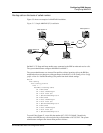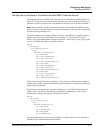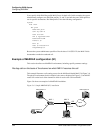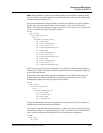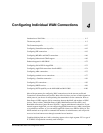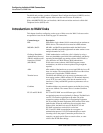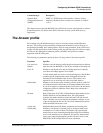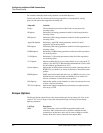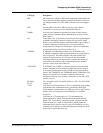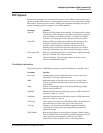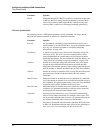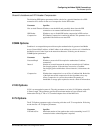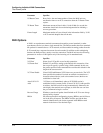
Configuring Individual WAN Connections
The Answer profile
MAX 6000/3000 Network Configuration Guide 4-3
This chapter does not describe RADIUS user profiles that serve the same function as resident
Connection profiles. For details about WAN connection security, see the MAX Security
Supplement.
The Answer profile
For incoming calls, the MAX unit always routes a call to the Answer profile (Ethernet >
Answer). The profile provides preliminary configuration information, such as the types of
encapsulation permitted, basic routing options, and call-setup parameters. If the call does not
comply with the specifications in the Answer profile, the unit drops the call. If it does comply,
the unit uses the appropriate Connection profile or RADIUS user profile to continue
negotiation with the calling unit.
The following six parameters specify the basic call setup values in the Answer profile:
Dynamic Host
Configuration Protocol
(DHCP)
DHCP is a TCP/IP protocol that enables a client to obtain a
temporary IP address from a central server (known as a DHCP
server).
Connection type Description
Parameter Specifies
Use Answer as
Default
Whether or not the Answer profile should override the factory defaults
when the unit uses RADIUS or TACACS to validate an incoming call.
Force 56 Whether or not the unit uses only the 56 kbps portion of a channel,
even when all 64 kbps appear to be available.
Use this feature when you receive calls from European or Pacific Rim
countries and the complete path cannot distinguish between the
Switched-56 and Switched-64 data services. This feature is not
required if you are receiving calls only from North America.
Profile Reqd Whether or not the unit rejects incoming calls for which it could find
no Connection profile and no entry on a remote authentication server.
If you do not require a configured profile for all callers, the unit builds
a temporary profile for unknown callers. Many sites consider this a
security breach.
ID Auth
How Calling-Line ID (CLID) or Dialed Number Information Service
(DNIS) should be used for authentication. The called number
(typically the number dialed by the far end) and CLID (the far-end
device’s number) can be presented by the telephone company as part
of the call information and used in a first-level authentication process
before the MAX unit answers a call.
Assign Adrs Enable/disable dynamic IP address assignment for incoming calls.
Framed Only Whether or not the user is allowed access to all the terminal-server
commands or to a subset of them. The default of No specifies that
terminal-server users connecting through this profile have unlimited
access to the terminal-server commands. Yes specifies that terminal-
server users connecting through this profile only have access to the
PPP, SLIP, CSLIP, and Quit terminal-server commands.



